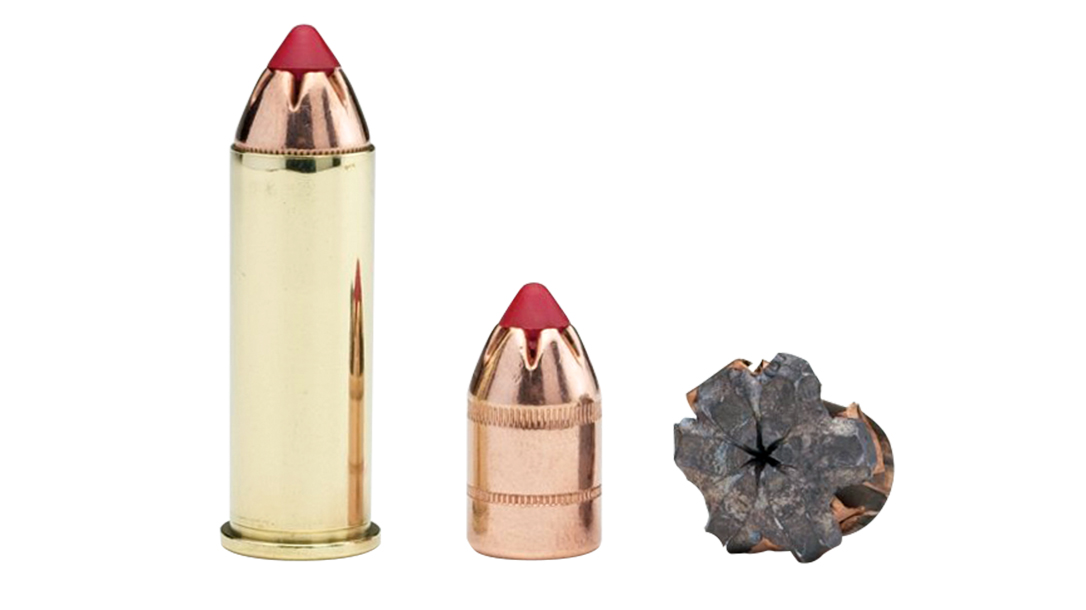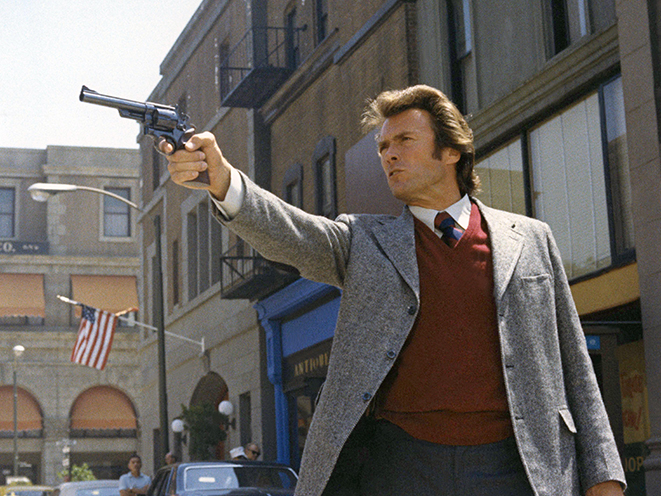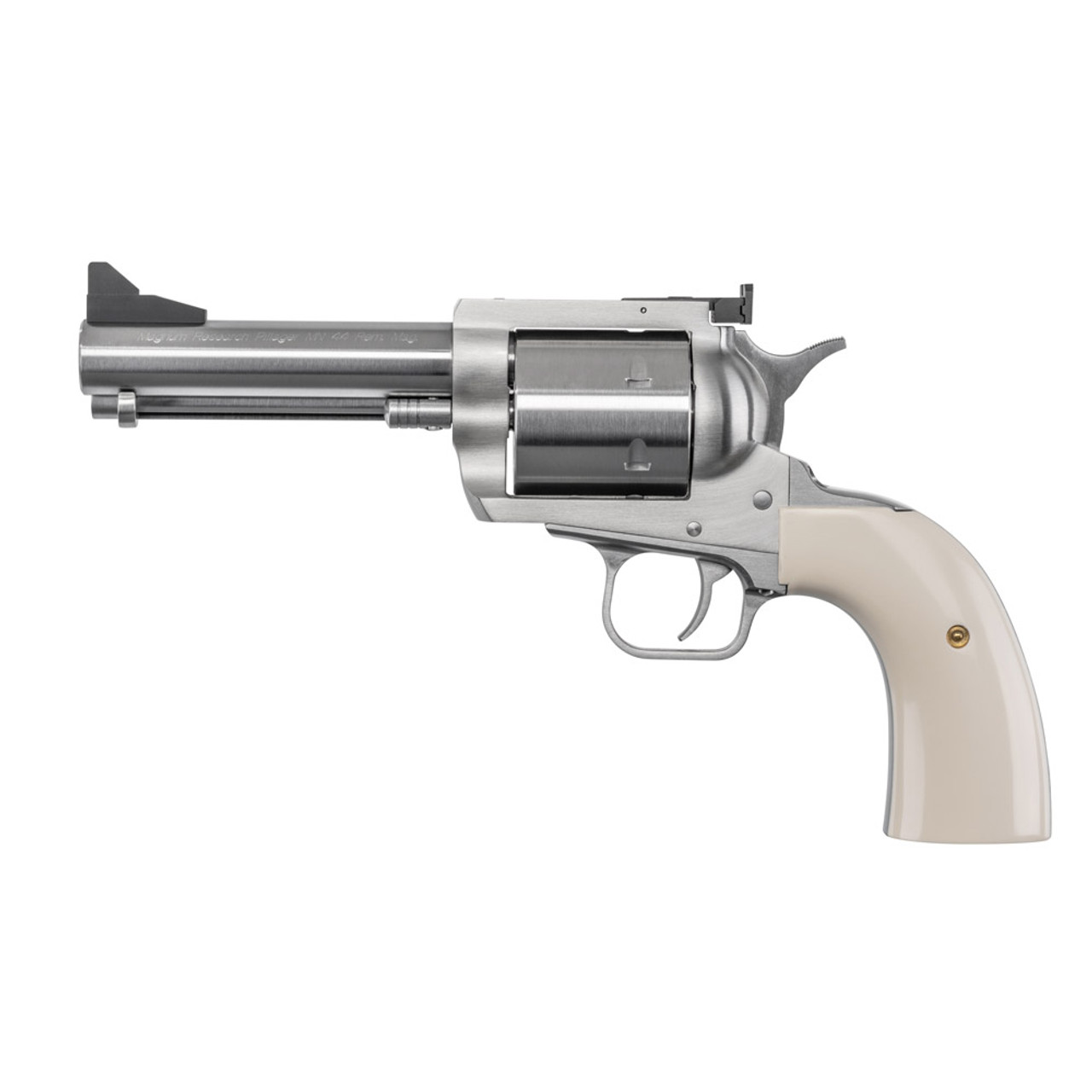Like apple pie, the .44 Magnum is about as American as you can get. From its inception more than 60 years ago, this cartridge has gained in popularity never before seen in a hunting cartridge. As a versatile hunting cartridge, it can be loaded down for small game or loaded up for larger animals. Guns number in the dozens, and factory ammunition is available in a wide variety of bullet weights.

When handloading, the combinations of bullets, powders, and primers number in the thousands—enough for a lifetime of work. Further, when purchasing a .44 Magnum for plinking or casual shooting, you can shoot .44 Special ammunition in the same gun without any problems.
Advertisement — Continue Reading Below
Origin Story
Naturally, nothing comes easy, and with the .44 Magnum, it took a while to get development moving. While the .357 Magnum was on its way with guns and ammunition, Elmer Keith started to plant the seed of a larger, heavier caliber, with suggestions to Remington to upgrade the .44 Special. Keith always favored big-bore rifles, so when it came to handguns, he was at the top of his game.
Remington’s Involvement
At Remington, he recommended the company introduce a commercial version uploaded to include his 250-grain bullet over 18.5 grains of Hercules 2400 powder. To Keith, that seemed to be a natural addition to the .357 Magnum, which was introduced in 1935. That gun was tested and proven, so Remington only had to mate the new cartridge to an upgraded handgun. Remington engineers were interested in the new idea. However, they weren’t comfortable with the idea of using the cartridge in some older guns, namely the time-worn triple-lock revolver. Keith suggested Remington make the cartridge a bit longer than the parent .44 Special case. This was so it could not be chambered in older, weaker guns. Remington liked that idea, but there was no gun then to handle that high-powered load comfortably.
Keith was on a tour that went from Remington to Smith & Wesson, where he met with then-president Carl Hellstrom. Hellstrom told Keith that Smith & Wesson was interested in the cartridge and promised the company would build a gun around the idea. Keith returned home doubting that he’d ever hear from Smith & Wesson again, especially considering the investment in such a project.
Advertisement — Continue Reading Below
Behind The Scenes
Behind the scenes, Remington supplied Smith & Wesson with the case dimensions of the new cartridge. As promised, it was 0.125 inches longer than the .44 Special cartridge. That way it could only be chambered in newer, stronger guns. In 1954, Smith & Wesson made four specially made tool room samples of the Model 50 Hand Ejector in .44 Magnum. When completed, one was forwarded to Remington for testing. Everyone agreed that the tests were promising, but they decided the revolver should be a little heavier. Designers went back to the drawing board. The gun was modified to reflect that discussion, with an increase in the frame and barrel dimensions. From there, the gun went into full production in February of 1955.
Early in 1956, Keith’s dream became a reality, as Smith & Wesson sent out three initial .44 Magnum guns. One went to R.H. Coleman at Remington, another to Julian Hatcher at the NRA Technical Center and the third to Keith. Folks purchasing one of the initial production guns had to be impressed. It was a beautifully crafted gun equipped with a 4- or 6.5-inch barrel. The gun had a blued or nickel finish and a white-outlined rear sight complemented with a red ramp front sight. It was all encased in a satin-lined black presentation case. In 1956, Smith & Wesson sold more than 3,100 Model 29 revolvers, showing there was enough of a demand for the finely crafted revolver to continue a serious production schedule.
Through the years, the Model 29 went through many variations in overall finish, barrel length and weight, and carbon or stainless steel construction, with numerous additions including target grips, triggers and hammers, along with the now-common three-screw side plates. The famous dash numbers appear on all Smith & Wesson revolvers. The dash numbers indicate improvements in operation or various butt configurations, or fluted or non-fluted cylinders, among other things to please discriminating shooters, hunters or collectors.
Advertisement — Continue Reading Below
Enter “Dirty Harry”

Of course, the “Dirty Harry” movie in 1973 had a huge influence on sales of the gun—to the point where I saw almost black market prices at some local dealerships. With an increase in production to decrease prices, the Model 29 has progressed to the point of still being a premium double-action .44 Magnum handgun, with availability as a production or exotic Performance Center gun.
On the other side of the coin, there’s the famous tale of how Ruger got into the .44 Magnum business. An astute Ruger employee was rummaging around a local scrap metal yard and found an odd-looking cartridge case with a “.44 Rem Magnum” headstamp. Bill Ruger had to find out the story, so he went to the director’s office at Remington. Sure enough, after digging a bit, he found out about the impending .44 Magnum project. He got the specs and started building his own Ruger single-action revolver in which to shoot it. Wasting no time, the new single-action gun, combined with its crowd-pleasing 7.5-inch barrel, was ready for production. In early 1957, the first guns shipped. Some say Ruger actually beat Smith & Wesson to the draw in distribution. Because the dates are so close, either company could have had bragging rights to the new era of shooting history.
Advertisement — Continue Reading Below
Modern Magnums
Today, like Smith & Wesson, Ruger offers a good choice for .44 Magnum handguns. In its traditional single-action guns, the Super Blackhawk still reigns supreme, with 10 models in various finishes and barrel lengths. On the double-action side, the Redhawk has five models, including a gun called the Hunter, with a higher rib machined for Ruger rings. The Super Redhawk is a beefed-up model with an extended frame, a triple-locking cylinder, barrel lengths up to 9.5 inches and the ability to mount a scope with proprietary Ruger rings. Additionally, there’s an abbreviated model called the Alaskan with a 2.5-inch barrel chambered for the .480 Ruger, .44 Magnum and .454 Casull. It’s the perfect handgun for guide duty deep in grizzly country.

Another gun that comes to mind is a Dan Wesson Pistol Pack I have in .44 caliber with a bevy of interchangeable barrels from 4 to 8 inches. Because of the weight of the longer barrels, it’s actually a pleasure to shoot heavy .44 Magnum loads. With heavy vent-rib barrels, it would be the ticket for larger game at moderate distances. Magnum Research has its single-action BFR (Big Frame Revolver) in four barrel lengths, and Taurus offers its Large Frame and Raging Hunter models in various barrel lengths and finishes.
Advertisement — Continue Reading Below
So, what’s this thundering .44 good for in the shooting sports? Because it’s so versatile, you can use if for thin-skinned game such as deer or antelope with lighter 180-grain bullets. When you move to bigger game, pick the 240-grain and larger bullets for elk, moose or caribou. In the field, carrying the big gun is easy when it’s cinched into a good shoulder holster. For accuracy at longer ranges, move to a gun that easily adapts to scope mounting.
For ammunition, major companies like Remington, Winchester, CCI, and Hornady cater to the needs of hunters no matter the game. I like to reload this caliber in softer .44 Special loads. Or for serious hunting, bump up to magnum status with the various powders available today. In either case, I continue to use the longer .44 Magnum cases in all my loads. If you use lead bullets, continued use of .44 Special cases starts a phenomenon called “ringing” in the charge holes. That’s the buildup of lead between the end of the case and the inside of the cylinder where it tapers down to allow a smooth transition of bullet to breech.
.44 Magnum Reload
Because the .44 Magnum is so popular, there’s plenty of new or once-fired brass available. If you purchase new brass, check the end flap of each box for the same lot number. Buy large pistol primers. The powder you use will determine if you purchase standard or magnum primers. For powders, Unique is great for reduced-power or Cowboy Action reloads. 5.5 grains with the lighter 180-grain lead bullet will give you about 700 fps. I use Hodgdon’s H-110, Alliant 2400, or Winchester 296.
Advertisement — Continue Reading Below
Purchase a good set of premium dies from Redding, Hornady, Lyman, or RCBS. Make sure a carbide full-length-sizing die is in the mix. Using no lubricant, it will save you countless hours of cleaning cases.
After seating the bullet, make sure you apply a firm crimp on the bullet and case for consistent ignition, and to keep the bullet from moving forward, stopping the rotation of the cylinder. Using Keith’s choice handload of a good 240-grain bullet over 22 grains of Alliant 2400 powder can produce upwards of 1,300 fps in a typical 6-inch-barreled gun. Depending on the gun and barrel, you can expect groups of about 2 to 2.5 inches at 50 yards from a good rest. And going on the idea cowboys had in the frontier days if you want a handgun and rifle chambered for the same cartridge, you can do it with .44 Magnum rifles like the Marlin 1894 or the equally famous Winchester Model 1892.
The .44 Magnum still reigns as one of the most popular handgun cartridges ever made. With a wide assortment of guns and ammunition, and the ability to load for plinking or big-game hunting, it continues to be on the bucket list for many shooters. If you’re a serious sportsman, you shouldn’t go through life without one.
Advertisement — Continue Reading Below
























